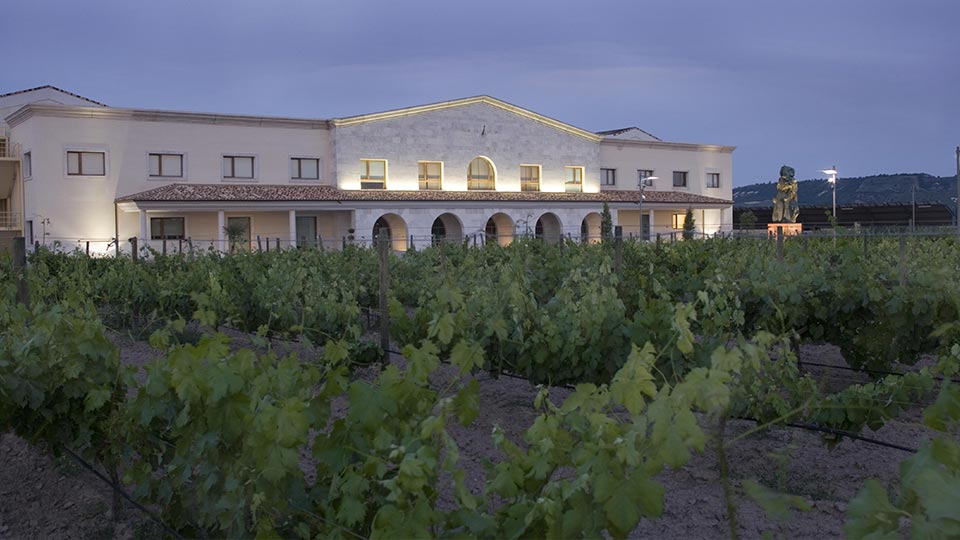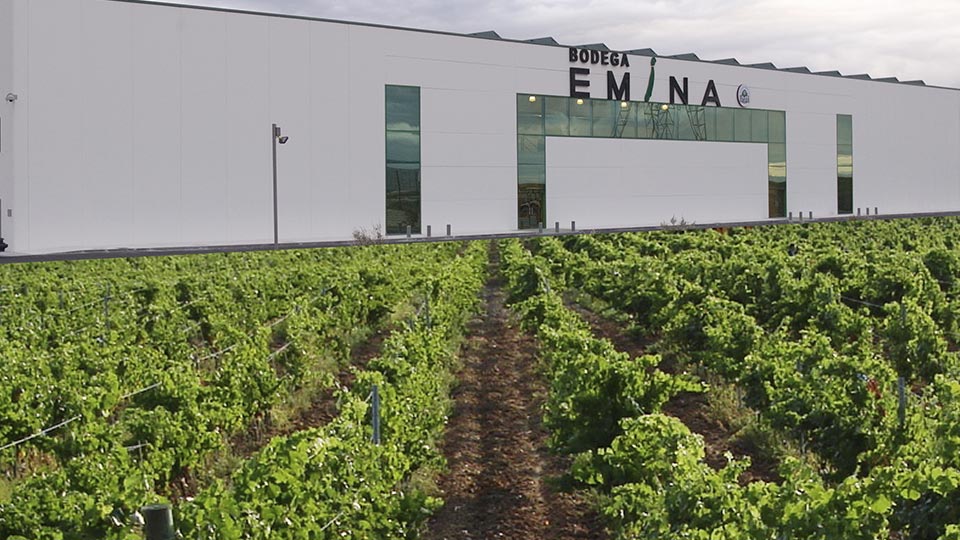They were used in the vine growing some years ago. Nowadays more modern tanks and tools are used. It is a way to know how the vine growing and labours have changed over the years. It is important to appreciate the initials of the full name of Ursicino Moro, Carlos Moro’s father, in one of the tools.
In front of the ancient tools, you can observe the difference between bush vines and trellis. Bush vines were the traditionally way to grow, but nowadays it is more common to use trellis to obtain more sunlight therefore more healthy and quality grapes.
Terroir refers all the factors involved in the wine making process, such as the soil, the weather, the humidity, the altitude,…
- Do La Rioja, traditionally, the best grapes were grown on the cooler slopes. La Rioja shares similar clay soils based on limestone. In some areas, where rainfall decreases to less than 400 mm at Logroño, there is a higher incidence of fertile, alluvial soils composed by silt.
- The soil of DO CIgales is light brown in colour and is formed by lime-bearing sand and gypsum-bearing clays, lying on a subsoil of clays and marls. Its structure is granular, weak, not very rocky and lacking in organic material.
- DO Toro, with only 350l of rain a year, is one of the driest wine making regions in Spain. The soil in Toro boasts a high content of river stones that accumulate heat during the day and act as a temperature regulator at night as the stones slowly release the heat absorbed during the day. Top soil is largely sandy and poor in organic material and the subsoil is often clay and holds the scarce rainfall that falls – a vital characteristic in such an arid area.
- The best vineyards in the O. Rueda have led to the typical “gravelly” soils. Dark grey-brown soils, rich in calcium and magnesium, stony but easy to farm, with good ventilation and draining, and limestone outcrops on the hilltops. Permeable and healthy, their texture varies from sandy-loamy to loamy.
- 32 different soil types. The Ribera del Duero is located on the great northern plateau of the Iberian Peninsula . It is formed by an enormous smoothened base and is partly covered by tertiary sediments. Most of these sediments consist of gently lenticular layers of silty or clayey sand; and also alternating layers of limestone and marl and even chalky concretions.






